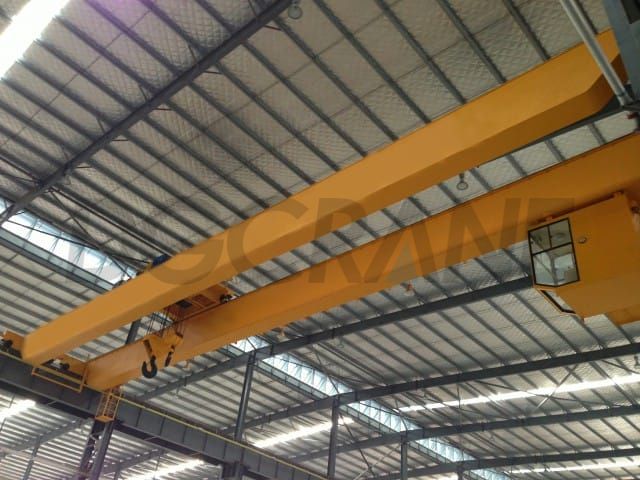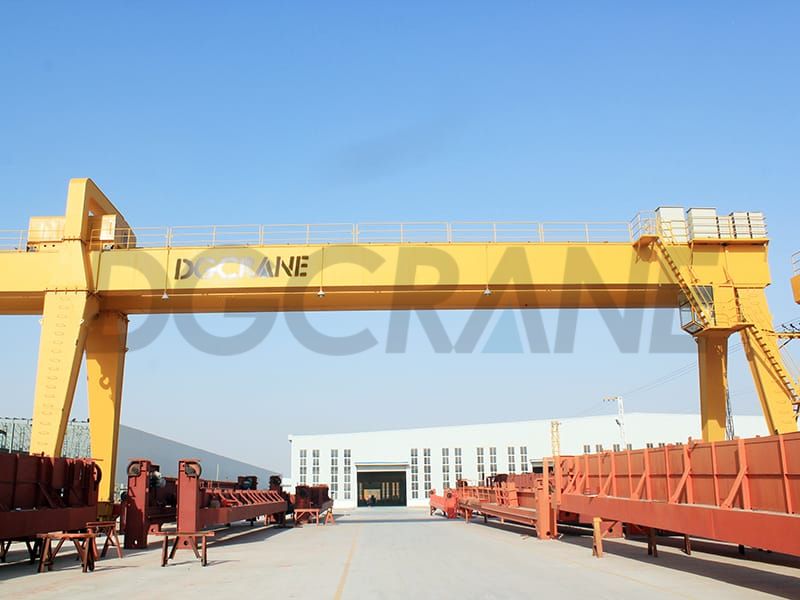What NEMA Means And The Difference Between Each Rating
QUESTION:
I have to install two new pieces of equipment in our industrial facility. One system will be used outdoors and one will be used indoors. An electrician told us that we have to use a particular enclosure to house the wiring for both systems, and they have to be NEMA-rated. I¡¯ve heard the term many times, but I¡¯m not exactly sure what NEMA means and the difference between each rating. I¡¯m hoping you can clarify.


LET’S BREAK IT DOWN:
If you¡¯re in the market for a motorized crane or your facility already uses one, you¡¯ve probably heard the term ¡°NEMA rating¡±. In fact, several readers have emailed us wondering what determines NEMA ratings, and the answer to that question is: NEMA does.
NEMA stands for the National Electrical Manufacturers Association, which was formed in 1926 to set standards for companies producing electrical products. NEMA enclosure ratings actually apply to any type of electrical equipment or wiring that¡¯s installed outdoors or in an industrial facility.
Originally, NEMA set out to ensure the quality of electrical devices, components, and wiring. But, as technology has developed over time, so too has the need to protect it. Now, electrical components like controls, vulnerable devices, and wiring need protection from the application and environment in which they are used. The best way to provide that protection is by housing them in an enclosure or a cabinet.
Although NEMA is not responsible for electrical enclosures, they did develop a rating system to grade and regulate them. Since then, NEMA ratings have become the standard for enclosures of all kinds. Each NEMA rating was developed to match a specific application and environment, which helps to ensure that you¡¯re using the right enclosure for your operation. And, there¡¯s a good reason for that.
NEMA-rated enclosures perform a very important function: controlling ingress and egress. Ingress is defined as a substance¡¯s ability to enter a structure or space¡ªin this case, an electrical enclosure. Egress, on the other hand, is defined as a substance¡¯s ability to escape a structure or space. Although most NEMA ratings focus on blocking ingress (preventing a substance from entering your electric enclosure), there are a few that also work to block egress (preventing a substance from escaping your electric enclosure). It¡¯s essential to choose the right NEMA rating for your application in order to protect your electrical components and wiring. Here¡¯s a breakdown of the most commonly used NEMA ratings, and what they were designed to do:
- NEMA 1 enclosures are typically used to protect controls and internal components from foreign objects and personnel. They were developed for indoor use and protect workers by restricting access to potentially hazardous components. They were not designed to keep out solid contaminants like water, dust, oil, and ice. Although NEMA enclosures are built with a latching door, they do not have a gasket-sealed surface.
- NEMA 3R enclosures are often used in outdoor applications for wiring and junction boxes. They shield workers from hazardous parts, and protect against solid contaminants like rain, sleet, snow, and external ice formation.
- NEMA 4 enclosures are made for indoor or outdoor use and are also designed to guard against the ingress of rain, sleet, and snow. They prevent the entry of solid contaminants like dust and dirt, and remain undamaged by ice formation on the outer surface. NEMA 4 enclosures are often used in applications where equipment is sprayed or washed with a hose¡ªparticularly when a pressurized stream of water is used. They have a gasket-sealed surface and a clamped door for maximum sealing.
- NEMA 4X enclosures are usually made of stainless steel or fiberglass. They¡¯re designed for use in harsher environments than standard NEMA 4 enclosures. These enclosures provide protection against ingress of solid foreign objects and contaminants, including dust, snow, rain, and pressurized hose water. They remain undamaged by external ice formation, and provide an additional level of protection against corrosion. NEMA 4X enclosures are often used in petro-chemical facilities and for food processing applications¡ªwhere equipment must be washed with disinfectants on a regular basis
- NEMA 6 enclosures are used for indoor or outdoor applications to protect wiring and electrical components from water. NEMA 6 enclosures protect against the entry of water during occasional submersion at a limited depth.
- NEMA 6P enclosures provide an extra measure of protection against corrosion, and are required to remain undamaged in the event of exterior ice formation. NEMA 6P enclosures are designed to protect against the entry of water during prolonged submersion at a limited depth.
- NEMA 12 enclosures are designed with out ¡°knockouts¡±; they are used indoors to restrict personnel access to hazardous components, and to protect enclosed equipment from the ingress of solid foreign contaminants like airborne dust, falling dirt, rocks, fibers, lint, and fly-offs. They also protect enclosed equipment from dripping (non-corrosive) liquids.
- NEMA 4/12 enclosures feature design aspects from both NEMA 4 and NEMA 12 enclosures. The enclosure often features reversible doors, concealed hinges, and rear mounting holes for easy installation and to protect electrical components from solid contaminants, water, and ice formation on the outer surface. The gasket-sealed surface and clamped door ensure maximum sealing for applications where equipment is hosed off or sprayed with a pressurized stream of water.
NEMA-RATED ENCLOSURES FOR HAZARDOUS LOCATIONS:
NEMA 7 and NEMA 10 enclosures are both designed to contain internal explosions with out causing external hazards. NEMA 8 enclosures are designed to prevent combustion in oil-immersed equipment, while NEMA 9 enclosures prevent the ignition of combustible dust. These particular enclosures are defined by the National Electric Code? (NEC) and National Fire Protection Association (NFPA).
Here¡¯s how it works: the National Electric Code (NEC) is the benchmark for safe electrical design, installation, and inspection to protect against electrical hazards. NFPA is best known for its sponsorship of the NEC, and their standard for electrical safety in the workplace, known as NFPA 70. In layman¡¯s terms, NFPA 70 is an acronym used for electrical and fire safety in the workplace, and it addresses the installation of electrical conductors, signaling conductors, and optical fiber cables in commercial, residential, and industrial occupancies.
MORE SPECIFICALLY:
- NEMA 7 enclosures are designed for indoor applications classified as potentially hazardous. NEMA 7 enclosures are typically used for locations defined as Class 1 (potentially explosive gas or vapor).
- NEMA 8 enclosures are similar to NEMA 7 enclosures. They are also used in Class 1 locations (potentially explosive gas or vapor). But, they can be used indoors or outdoors, and they¡¯re specifically designed to protect wiring and electrical components immersed in oil.
- NEMA 9 enclosures are constructed for indoor use in Class II, Division 1 hazardous locations, as defined by the North American Classification System and the National Fire Protection Association (NFPA). Class II, Division 1 hazardous locations involve potentially explosive dust that is present during normal operating hours.
- NEMA 10 enclosures are designed to meet the requirements of the Mine Safety and Health Administration, 30 CFR, Part 18.
The demand for electrical devices has far surpassed other means of motive power. As the use of electrical products continues to grow, so too does the need for manufacturing regulations for electrical safety. NEMA has established a simple categorization process that ensures compatibility between devices, promotes worker safety, and continues to develop new standards for the constantly evolving electrical industry.




























































































































